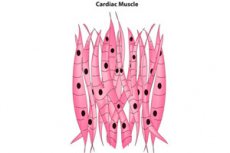
心力衰竭是全球主要死亡原因之一,当患者出现心力衰竭时,他们会开始失去健康、功能正常的心脏细胞。心力衰竭会导致这些曾经柔韧的细胞变成纤维细胞,不再能够收缩和舒张。心脏细胞的硬化会削弱其有效输送血液至身体其他部位的能力。由于这些心脏细胞无法再生,患者面临着漫长的康复之路,包括预防性治疗或对症治疗。
然而,一些哺乳动物能够再生心脏细胞,尽管这通常发生在出生后的特定时间段内。基于此,Mahmood Salama Ahmed 博士和一个国际研究团队完成了一项研究,旨在确定美国食品药品监督管理局 (FDA) 先前批准的用于再生心脏细胞的新型治疗药物或现有治疗方案。
他们的研究成果《鉴定 FDA 批准的诱导哺乳动物心脏再生的药物》发表在《自然心血管研究》杂志上。
艾哈迈德补充道:“这项研究的目的是再生疗法,而不是对症治疗。”
艾哈迈德是德克萨斯理工大学杰里·H·霍奇药学院的药学教授,他参与了德克萨斯大学西南医学中心的这项研究。他表示,目前的研究以德克萨斯大学西南医学中心医学博士希沙姆·萨德克实验室2020年的一项研究成果为基础。
在那项研究中,研究人员证明,小鼠确实可以通过基因敲除两个转录因子(Meis1 和 Hoxb13)来再生心脏细胞。基于此信息,Ahmed 和他的合著者于 2018 年在德克萨斯大学西南医学中心开始了他们的最新研究。他们首先使用巴龙霉素和新霉素(两种氨基糖苷类抗生素)靶向转录因子(Meis1 和 Hoxb13)。
“我们开发了抑制剂来关闭内部转录并恢复心脏细胞的再生能力,”艾哈迈德补充道。
Ahmed表示,巴龙霉素和新霉素的结构表明它们具有与转录因子Meis1结合并抑制的潜力。为了理解这种结合是如何发生的,研究小组首先必须阐明巴龙霉素和新霉素的分子机制,并了解它们如何与Meis1和Hoxb13基因结合。
“我们开始在患有心肌梗塞或缺血的小鼠身上进行测试,”艾哈迈德解释说。“我们发现两种药物(巴龙霉素和新霉素)协同作用,提高了射血分数(每次收缩时离开心脏的血液百分比),从而显著改善了心室(心脏的腔室)的收缩力。这增加了心输出量,并减少了心脏内形成的纤维瘢痕。”
该团队与阿拉巴马大学伯明翰分校的科学家合作,给患有心肌梗死的猪施用巴龙霉素和新霉素。他们发现,在施用巴龙霉素和新霉素后,心肌梗死猪的收缩力、射血分数和心输出量总体都有所改善。
在未来的研究中,Ahmed 的目标是将巴龙霉素和新霉素的结合特性整合到一个分子中,而不是两个。他表示,如果成功,这种新分子可以避免与抗生素耐药性相关的任何不良或潜在不良反应。
“我们想研制出针对Meis1和Hoxb13的新型合成小分子,”Ahmed说道。“我们想继续在猪身上进行毒理学研究。希望这能为人体临床试验打下基础。”
“好消息是,我们正在使用几种FDA批准的药物,这些药物的安全性和副作用都已得到确认,因此我们可以省去一些新药研发审批的步骤。这就是药物再利用的魅力所在:我们可以更快地进入临床,拯救生命。”

